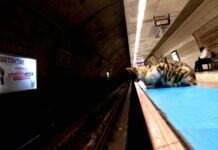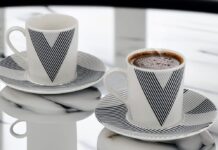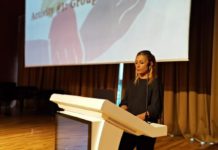Photography is heralded as the most effective medium in sharing stories from around the world, especially true in the current state of fast-paced news media where visuals must speak volumes in a passing moment. Photojournalism has always been a driving force behind global information exchange, and as the field has constantly adapted to new norms, demands, and technologies, so too have the photographers making a living in the industry. Joris van Gennip is one such talented independent photojournalist navigating the challenges of mastering his craft, building an international network, funding the stories he chooses to pursue, finding outlets to publish his works, and most importantly, sharing stories in an effort to impact social change. His career has seen him travel the world from independent projects in the villages of India to collaborating with organizations such as Médecins Sans Frontières, Greenpeace, and Amnesty International. With regular contributions to one of the Netherlands’ most established publications, De Volkskrant, Joris continues to explore his options, always in search of content that piques his interest and stays true to his principled approach of visual storytelling. Currently based in Turkey, his scope includes everything from daily life and culture, to Turkish elections, to his true passion projects like his recent documenting of the stories of families effected by the Soma mine disaster of 2014. Despite a loaded program and his seemingly ever-changing surroundings, Joris maintains a relaxed and practical outlook on his work, with a certain confidence which makes it clear everything is in its right place.
We took some time to speak with Joris on the importance of pursuing one’s true calling, the complexities in making a living off freelance photojournalism, the power of the medium for social change, and what’s next on the horizon for this ambitious photojournalist.

Could you tell us a little bit about yourself?
In short I am a 32 year old photographer from the Netherlands. My name is Joris van Gennip. For the past six to seven years I’ve been working as a freelance photojournalist, mainly from within Amsterdam for Dutch newspapers. For around nine months I’ve been living Istanbul doing basically the same work for Dutch newspapers, but also covering Turkish daily life and politics and traveling abroad to Greece. I also do feature stories for myself, I’ll go to places that are interesting or have breaking news stories and try to pitch them to magazines.
What led you to the field of photography? How did you wind up in Istanbul?
Long story short, I never was involved in photography before age 24. I was studying music at that time, sound design. In Holland, every year you take on internships and while my friends stayed in the country, I decided to go to India to teach guitar to underprivileged children. The country really influenced me. I thought it was beautiful, but there was so much poverty and inequality that I wanted to capture it just to show to share with friends and family. I kept traveling to India throughout the next four or five years, all through my education. Every time I’d upgrade my camera a little bit and music would take less and less of a role. So that was the kick-start.
So are you a self-taught photographer?
Well, there was Youtube, but I didn’t have any formal education in the field.
When you finished with the India chapter what was the transition from sound design to photojournalism?
So during my education, for my final project, while everyone else was doing their own large sound arrangements, performances, or albums, I decided to do a photo essay on India with my music in the background. So already in my last project it was clear my main passion was photography. When I finished my education I did as much as I could to become professional.
For best results, click to enlarge images.
What was your first real gig?
In the beginning it was pretty tame – stuff for friends and families, like photos of their dog or weddings or walks with their grandmother. It was pretty basic stuff. Then I saw an internship offer from de Volkskrant, the biggest newspaper in Amsterdam. I decided to pack my bags and leave my hometown to start that internship. That was six months and after that for a whole year, I didn’t have any work, but at least I knew a bit on wanted the newspapers wanted. Then I just kept spamming people and going for cups of coffee and photographing more and more and it grew from there.
Do you still do any of that personal photography for clients?
Well, I’ve completely shifted to photojournalism, but I really should do more of that kind of photography. It’s about real life. It can be so beautiful to capture. Hopefully professionally. These are special moments in other people’s lives – they’re getting married, finishing exams, their last moments with their grandmother, celebrating a 100th birthday. They’re great moments to eternalize and I should do it more often.
What brought you here to Istanbul originally?
Love. Marriage. I think it’s a main reason for a lot of journalists actually for coming here. There aren’t too many that come purely to cover Turkey otherwise. I got married before we came here, and we wanted to live in Holland but it didn’t work out, so we decided to move here. I’ve been coming on and off for the last four years.
Do you have a workflow here? Do you work with Turkish publications?
I basically just work through my Dutch contacts. A big advantage is they pay in Euros and a lot of Turkish publications work with Turkish photographers – rightfully so. So it’s a combination of my contacts calling me to cover something or I make a story and pitch it to them. It’s also important for me to maintain those contacts because eventually we will maybe go back to Holland or elsewhere in Europe.
Can you walk us through a day in the life of a photographer here?
It’s usually quite boring. [Laughter.] I get up rather early. I’ll meditate and read the news and Twitter on what’s going on. At the moment it’s usually the same content with elections and politics. Then I just check if there’s something newsworthy to cover. Today there was a small protest in front of the Saudi Arabian consulate about the murdered journalist, so I went to take some photos for my archives. Now I have this interview. After this I will write some e-mails, pitch some stories, and so forth. Nowadays the actual photography is slow again, but next month is elections and it’ll be more active.
How much of what you take on is stories you’ve pitched and how much is assigned?
My problem is with my main newspaper de Volkskrant, their correspondent doesn’t have a Turkish press card yet, nor an ikamet. So he’s here on and off, so they don’t call me that much. So nowadays it’s more about really keeping track of the news and whenever Holland writes about daily life or news from Istanbul and Turkey, they can find my pictures.
How does ATÖLYE fit in?
Well, for a time I was feeling very isolated and lonely. For almost a whole day I was just with my laptop. I wanted to get into the world a little more. I started Googling workplaces and I found this place was just three minutes walking from house. I decided to stop by – a bit skeptical at first because it’s about design mostly instead of journalism or photography, but it’s been very welcoming and a warm group of like-minded people. I feel like I fit in in my own little way.
You’ve won awards and distinctions for your work in photography. Do you have a particular image that resonates with you or you think back on a lot?
Well, there was an image I had mentioned in Expat Spotlight but I gave it some thought afterwards, and for me actually the moment I really decided to photograph social issues was during my first trip to India. I still remember when I first arrived and remember seeing families of 9 or 10 people living underneath a small piece of plastic. Shortly after I went to Germany and was seeing all these big BMWs in front of houses, two or three in front of a house. There were lots of vacant, empty buildings for sale… and I couldn’t stand the inequality. I realized I need a creative way to show the world that this shouldn’t be existing. The anger stayed with me and influenced what I do.
Do you still pursue social issues that are important to you? What’s that like here?
It’s rather easy to do in Turkey, but it’s difficult to sell which of course sounds horrible. There isn’t that much interest. The news in Holland is usually so negative about Turkey, so they actually want more light topics. I did just finish a trip to Soma, it was the five year anniversary of the disaster there. There are all these stories that nobody covers anymore. These families are still dealing with the hardships of friends, lovers, and family members they lost. You can cover these stories and hope people still remember. Really that’s the only true form of photography for me.
I wasn’t here when it happened. It was just something I read about on the internet. But when you’re actually there… You know the imam was praying, we went to the cemetery, all these women were in front of the graves of their husbands, brothers, uncles, fathers, etc. Just to hear how little empathy there is, I mean there are lots of reasons, but it’s a forgotten tragedy and these people are still deeply effected every day.
For best results, click to enlarge images.
What would you say is the biggest challenge in your work at the moment?
Well, money actually. Very often, when things are moving slow especially, you realize you might make more money working at a market. If something happens to my equipment, like when two lenses of mine got stolen a few weeks ago, then of course there’s financial hardship. I think that’s my biggest problem.
There are also a lot of stories I’d like to do but I don’t have the money for them. Publications won’t pay you beforehand. They want you to show them the story, so you have to then invest yourself. Also, of course day-to-day life and increasing prices here in Istanbul. Financial worries are a big thing and staying motivated throughout.
What’s next on the agenda in future months?
Well, we’re planning to move to Paris in a few months. I received a freelance appointment offer there by a newspaper and my wife wants to go to Europe, so 1+1 is 2. So that’s my main priority.
Also of course the Turkish elections are coming up so that’s for the short term.
Any final words of wisdom or advice for foreigners living in Turkey?
I haven’t actually visited yes, but cemeteries. Istanbul is a place that needs green spaces. It’s noisy and busy and there isn’t much personal space. Istanbul has some gorgeous cemeteries that are open to everyone. I really feel like I need tranquility. Cemeteries are a great place to find it, especially when the weather is beautiful and everyone else is going to Maçka park and such. Gone is the tranquility there, but cemeteries maintain it.
To keep up with Joris and his work, check out his official website and be sure to follow him on Instagram, Twitter, and Facebook.
ATÖLYE Spotlight is our series on the inspiring community members of Istanbul’s most creative space.
All images courtesy of the interviewee.

















